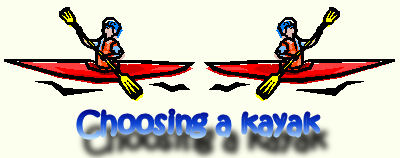

 |
 |
 |
 |
 |
 |
Kayak Fishing It's all about the water..... In the past few years kayak fishing has become a huge sport for anglers and the popularity of this sport is still growing dramatically. Most Marylanders live within a 30 minute drive of any body of water, whether if it’s a fresh water lake, river, the chesapeake bay, or the ocean. Kayaks can be purchased inexpensively and have little or no maintenance costs.
Kayaks can be stored in small spaces and can be launched quickly without the need for paved ramps or launches.
This, in my mind, makes for a great day of recreation and a unique opportunity to convene with nature with little or no impact
on the environment. So long as you practice "catch and release" or take only what you need for supper.
You can also benefit from the fresh air and exercise. If you're looking for a new hobby, a new recreation, or if you just want to get a little of what mother nature has to offer. Recreational kayak fishing could be the thing for you. If this is your first time at my website, stick around……… click around……… or better yet, register in the forum. I'd love to hear some of the new ideas coming from members. Oh yah, just a reminder, it’s all about the water. |
| Did you know.... |
Kayaks were originally developed by the native people living in the Arctic regions, who used the boats to hunt the inland lakes, rivers and coastal waters of the region. The word "kayak" (qujaq) means "man's boat" or “ boat for hunting” in the Inuit or Eskimo language. These first kayaks were constructed from stitched animal skins stretched over a wooden or whale bone frame. Scientists have found evidence indicating that kayaks are at least 3700 years old. The people of these indigenous regions still use the same methods for building kayaks. | Wooden kayaks and fabric kayaks on wooden frames dominated the market through the 50’s and 60’s when fiberglass boats were first introduced. Today, fiberglass and plastic boats can be made smaller, stronger and to a higher standard of safety. Today there are two major configurations of kayaks - "S.O.T." which involves sitting on top of the kayak with an open area and "S.I.K." which involves sitting with the legs and hips inside the kayak hull. Whether a kayak is a sit-on-top or a sit-in-kayak has nothing to do with vehicle function, only personal preference. |
|
|
 Choosing your kayak is not that difficult. Although you need to bare in mind which activities you're going to be doing more of, venturing or fishing. If your interests revolve around exploring and touring, then a touring kayak might suit your needs more than if you just wanted to fish with it. A S.I.K. type sport or touring kayak in my opinion is much better for traveling long distances across large bodies of water in less time with less effort. Touring kayaks utilize a sleek and narrow design to help cut through the water. There is less drag, or resistance with each paddle stroke allowing the boat to travel two to three times farther than conventional S.O.T. type kayaks. That’s not to say you can't fish from a S.I.K. touring kayak, but in my experience you can be slightly limited in aspect to being confined inside your kayaks cockpit. These kayaks are also just a bit less stable and requires a little practice before setting out on you first trip. A S.I.K. kayak also has limitations regarding a persons size. First hand knowledge leads me to gather that fat guys shouldn't ride in little boats. It can be a tight squeeze. Much like rapping a grape skin around a watermelon. After a couple hours of paddling you can become somewhat stiff. An S.O.T. type kayak has just a few more benefits than S.I.K.’s in regards to versatility and for fishing. The open cockpit allows greater room for stretching out and relaxing. The bottom of most S.O.T. kayaks are generally flat. This makes for a much more stable ride. I would venture to say that a person is less likely to flip or overturn, and very little experience is needed to operate an S.O.T. type kayak. A bare bones S.O.T. kayak will not track as well as a sport/touring kayak. By this I mean in heavy current an S.O.T. type kayak will be drawn off coarse a little more than a sport/touring S.I.K. will. Adding a small skeg or a rudder will improve tracking. An S.O.T. type kayak can generally carry more weight than other kayaks so you can bring more gear. Also, an S.O.T. has a shallow draft displacing less water per square foot. This allows you to get into much shallower water than most S.I.K. kayaks.
|
| We have a lot more coming soon.
Join us in the forum Register at www.marylandkayakfishing.freeforum.ca/ |